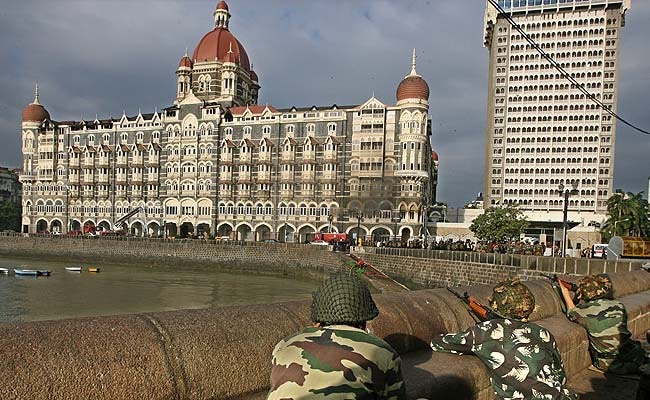
166 people were killed when terrorists attacked key landmarks in Mumbai on November 26, 2008. (Agence France-Presse photo)
New Delhi:
Tariq Khosa, the investigator who headed Pakistan's probe into the 26/11 Mumbai terror attacks, has said in an editorial in the Dawn newspaper that the attack was "planned and launched" from Pakistani soil.
Mr Khosa was appointed to head Pakistan's premier Federal Investigating Agency or FIA soon after the attack in November 2008. 166 people were killed by 10 terrorists who sneaked into Mumbai on a boat and attacked the city's landmarks. One, Ajmal Kasab was caught alive and hanged in 2012.
In his editorial, Mr Khosa virtually backs every claim India has made about Pakistan's role in the attack, listing seven facts about the investigation there that he says "are pertinent."
1) Mr Khosa says, "Ajmal Kasab was a Pakistani national, whose place of residence and initial schooling as well as his joining a banned militant organisation was established by the investigators."
2) "The Lashkar-e-Taiba (LeT) terrorists were imparted training near Thatta, Sindh and launched by sea from there. The training camp was identified and secured by the investigators. The casings of the explosive devices used in Mumbai were recovered from this training camp and duly matched," writes the former Director General of the FIA.
3) He says the "fishing trawler used by the terrorists for hijacking an Indian trawler in which they sailed to Mumbai, was brought back to harbour, then painted and concealed. It was recovered by the investigators and connected to the accused."
4) "The engine of the dinghy abandoned by the terrorists near Mumbai harbour contained a patent number through which the investigators traced its import from Japan to Lahore and then to a Karachi sports shop from where an LeT-linked militant purchased it along with the dinghy. The money trail was followed and linked to the accused who was arrested," Mr Khosa says.
5) "The ops room in Karachi, from where the operation was directed, was also identified and secured by the investigators. The communications through Voice over Internet Protocol were unearthed."
6) "The alleged commander and his deputies were identified and arrested," writes Mr Khosa. Zaki-ur-Rahman Lakhvi, the mastermind of the 26/11 attacks was arrested along with others in 2008. They are still on trial and Lakhvi was granted bail earlier this year.
7) "A couple of foreign-based financiers and facilitators were arrested and brought to face trial," says the former investigator.
Mr Khosa was appointed to head Pakistan's premier Federal Investigating Agency or FIA soon after the attack in November 2008. 166 people were killed by 10 terrorists who sneaked into Mumbai on a boat and attacked the city's landmarks. One, Ajmal Kasab was caught alive and hanged in 2012.
In his editorial, Mr Khosa virtually backs every claim India has made about Pakistan's role in the attack, listing seven facts about the investigation there that he says "are pertinent."
1) Mr Khosa says, "Ajmal Kasab was a Pakistani national, whose place of residence and initial schooling as well as his joining a banned militant organisation was established by the investigators."
2) "The Lashkar-e-Taiba (LeT) terrorists were imparted training near Thatta, Sindh and launched by sea from there. The training camp was identified and secured by the investigators. The casings of the explosive devices used in Mumbai were recovered from this training camp and duly matched," writes the former Director General of the FIA.
3) He says the "fishing trawler used by the terrorists for hijacking an Indian trawler in which they sailed to Mumbai, was brought back to harbour, then painted and concealed. It was recovered by the investigators and connected to the accused."
4) "The engine of the dinghy abandoned by the terrorists near Mumbai harbour contained a patent number through which the investigators traced its import from Japan to Lahore and then to a Karachi sports shop from where an LeT-linked militant purchased it along with the dinghy. The money trail was followed and linked to the accused who was arrested," Mr Khosa says.
5) "The ops room in Karachi, from where the operation was directed, was also identified and secured by the investigators. The communications through Voice over Internet Protocol were unearthed."
6) "The alleged commander and his deputies were identified and arrested," writes Mr Khosa. Zaki-ur-Rahman Lakhvi, the mastermind of the 26/11 attacks was arrested along with others in 2008. They are still on trial and Lakhvi was granted bail earlier this year.
7) "A couple of foreign-based financiers and facilitators were arrested and brought to face trial," says the former investigator.
Track Latest News Live on NDTV.com and get news updates from India and around the world

